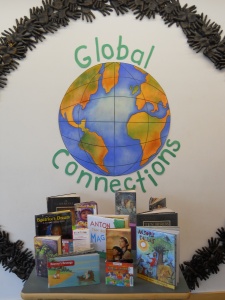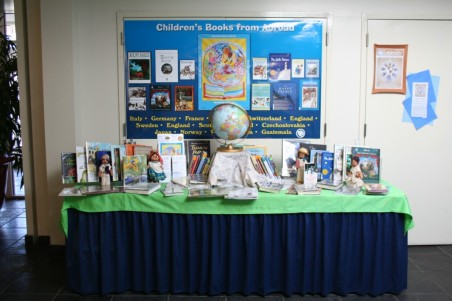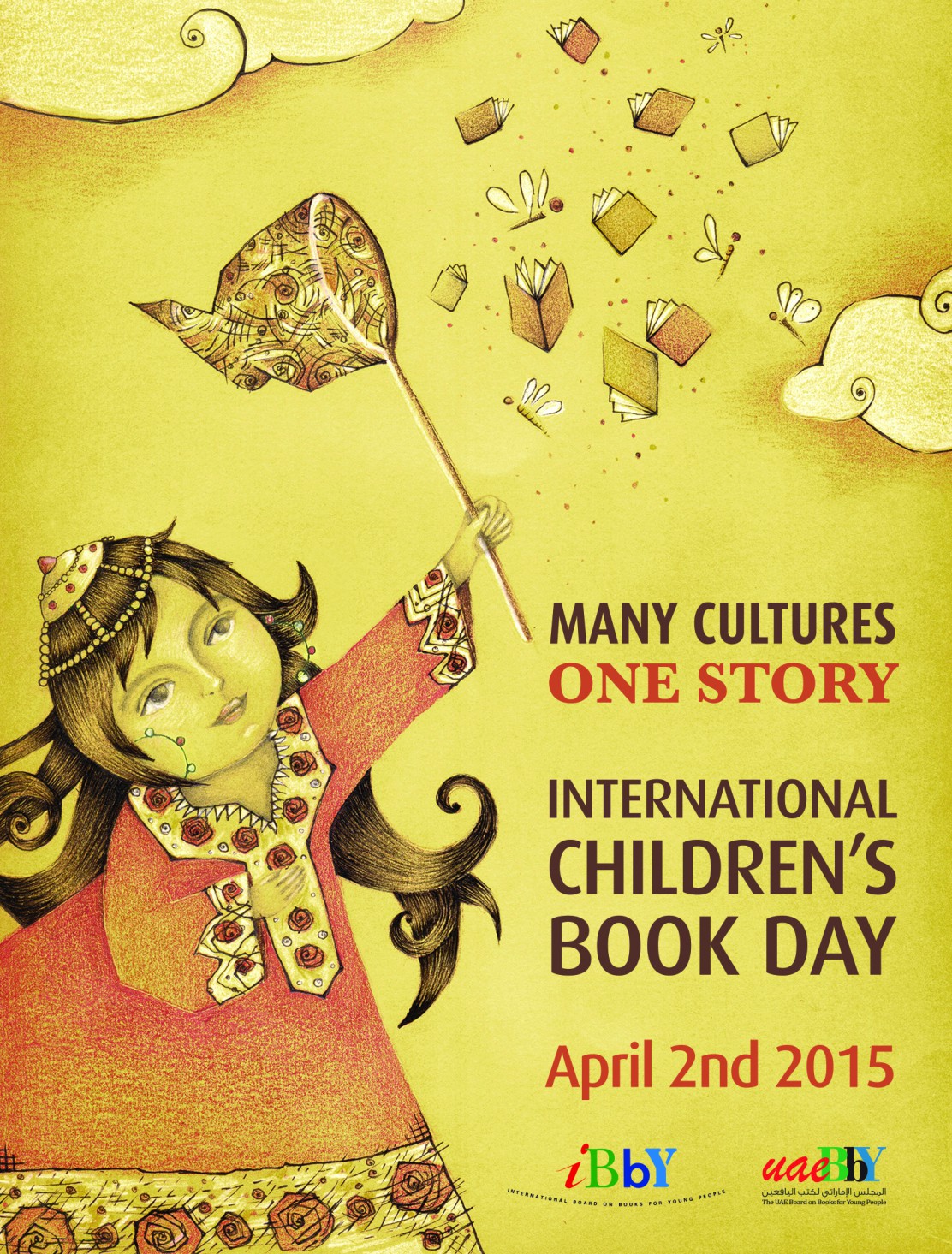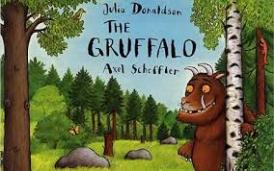Siobhán Parkinson’s Letter to the Children of the World
This year Ireland hosted International Children’s Book Day!
Letter to the children of the world
Readers often ask writers how it is that they write their stories – where do the ideas come from? From my imagination, the writer answers. Ah, yes, readers might say. But where is your imagination, and what is it made of, and has everyone got one?
Well, says the writer, it is in my head, of course, and it is made of pictures and words and memories and traces of other stories and words and fragments of things and melodies and thoughts and faces and monsters and shapes and words and movements and words and waves and arabesques and landscapes and words and perfumes and feelings and colours and rhymes and little clicks and whooshes and tastes and bursts of energy and riddles and breezes and words. And it is all swirling around in there and singing and kaleidoscoping and floating and sitting and thinking and scratching its head.
Of course everyone has an imagination: otherwise we wouldn’t be able to dream. Not everyone’s imagination has the same stuff in it, though. Cooks’ imaginations probably have mostly taste in them, and artists’ imaginations mostly colours and shapes. Writers’ imaginations, though, are mostly full of words.
And for readers of and listeners to stories, their imaginations run on words too. The writer’s imagination works and spins and shapes ideas and sounds and voices and characters and events into a story, and the story is made of nothing but words, battalions of squiggles marching across the pages. Then along comes a reader and the squiggles come to life. They stay on the page, they still look like battalions, but they are also romping about in the reader’s imagination, and the reader is now shaping and spinning the words so that the story runs now inside his or her head, as it once did in the head of the writer.
That is why the reader is just as important to the story as the writer. There is only one writer for each story, but there are hundreds or thousands or maybe even millions of readers, in the writer’s own language, or perhaps even translated into many languages. Without the writer the story would never be born; but without all the thousands of readers around the world, the story would not get to live all the lives it can live.
Every reader of a story has something in common with every other reader of that story. Separately, and yet in a way also together, they have re-created the writer’s story in their own imagination: an act that is both private and public, individual and communal, intimate and international. It may well be what humans do best.
Keep reading!
Siobhán Parkinson
Author, editor, translator and former Laureate na nÓg (Children’s Laureate of Ireland).
Inspiring a Passion for Young Readers
Name: Laurel Heger
Email: laurelheger@yahoo.com
Institution: Libraries and or field trips to Community Colleges by 3-6 graders
Audience: Grades 3-6
Books used:
Thumbelina By Hans Christian Anderson and over 150 fairy tales and stories by Hans Christian Anderson.
Materials needed:
The 1952 musical film Hans Christian Andersen, posters for the event (designed by college students), and materials to design finger puppets for the story characters.
Brief outline of program or event:
Children’s literature students from Community colleges would read Thumbelina and use finger puppets to re-enact the story as portrayed in the 1952 movie with Danny Kaye:
A party theme with the sound/music playing I’m Hans Christian Anderson:
Salt Lake City Celebrates ICBD
 It’s never to early to think about how we can celebrate the next International Children’s Book Day in 2015!
It’s never to early to think about how we can celebrate the next International Children’s Book Day in 2015!
Celebrating ICBD can be as simple as making a display that catches the attention of parents and children browsing in your library. Robyn Green of the Salt Lake City Public Library created this display called “Global Connections.”
Utah USBBY Representative Lauren Aimonette Liang teaches an International Children’s Literature undergraduate class at the University of Utah. In that class, she revisited the authors each student had chosen to study for their Hans Christian Andersen Award author studies (done the previous month) by going around the room and stating the title and general plot of the favorite book they had read by the author they had studied.
Celebrating ICBD All Year Round…

It’s easy to celebrate International Children’s Book Day throughout the year by incorporating international children’s books in your storytimes, read alouds, and reader’s advisory, and by making displays like the one pictured here, courtesy of the Northport-East Northport Library.
Need international book suggestions? Check out the Resources page for the current Outstanding International Books list and the ALSC Quicklist inspired by 2013’s theme “Bookjoy Around the World.”
Global Literature from England by Doris Gebel
Doris Gebel is the President of USBBY and Head of Children’s Services at the Northport-East Northport Public Library in Northport, NY.
The International and Global Literature Collection at Northport Library was launched in December 2012. This growing collection features children’s and young adult literature translated from a language other than English, imported from outside the USA, or written by an author with international roots.
Perhaps the best known literature from abroad comes to us from England. What American child does not know Winnie-the-Pooh (albeit thanks to Mr. Disney). 
Never the less, he is just one of the famous animal characters that populate British children’s literature. He stands proudly next to Paddington and the creatures of The Wind in the Willows. Little people are no strangers to British children’s literature beginning with the folk character of Tom Thumb to Jonathan Swift’s Lilliputians in Gulliver’s Travels to Norton’s Borrowers.
Britain stands among the first nations to institute the position of Children’s Laureate, naming Quentin Blake, Anne Fine, Anthony Browne (author and illustrator of that famous gorilla), Michael Morpurgo (author of nearly 100 books for young people and recently come to our attention by way of War Horse), and the current Julia Donaldson (if you don’t know the Gruffalo, check out Donaldson talking about her process http://www.youtube.com/watch?v=Pk2UFQSfndo and see the universal appeal of the story from Hong Kong http://www.youtube.com/watch?v=eIAU8eWL43w to Italy http://www.youtube.com/watch?v=jj0RYFLrMAs.)
Children of long ago cherished books like A Child’s Garden of Verse, Gulliver’s Travels, Robinson Crusoe or Treasure Island. From the more recent past there’s The Chronicles of Narnia, The Sword in the Stone, The Hobbit, Alice in Wonderland, Peter Pan, Mary Poppins, The likes of Joan Aiken, Leon Garfield, Rosemary Sutcliffe, Mollie Hunter, Helen Cresswell, Ian Serrraillier, Philppa Pearce, William Mayne and Roald Dahl stand in the halls of great British writers for children. Contemporary authors such as Eva Ibbotson, Phillip Pullman, Hillary McKay….dare I mention J.K Rowling are also currently popular in England.
And this doesn’t touch on the great tradition of picture books. Just consider the works of the great nineteenth century illustrators, Randolph Caldecott, Kate Greenaway and Beatrix Potter, to name just three.
Check out these popular Irish authors and illustrators: Roddy Doyle, Siobhán Parkinson, Oliver Jeffers, Shibhán Dowd, Eoin Colfer, P.J. Lynch.
We are all familiar with the Newbery and Caldecott awards and wait with anticipation for their announcement each January. The British equivalent of these awards are the Carnegie and Kate Greenaway Awards: http://www.carnegiegreenaway.org.uk/home/index.php Also of interest is the Guardian Prize http://www.guardian.co.uk/books/guardianchildrensfictionprize
Further Reading:
Chambers, Aidan. Tell Me: Children, Reading and Talk. Pembroke, 1996.
Townsend, John Rowe. Written for Children: an outline of English-Language children’s literature. Scarecrow Press, 1996.
The Children of the Philippines Celebrating the Joy of Reading
 Name: Eva B. Ramos
Name: Eva B. Ramos
Institution: Rainbows Foundation
Audience: Children, Educators, Librarians, Volunteers
Books used:
The Very Hungry Caterpillar, Handa’s Surprise, Crow Boy, Each Kindness, Flat Stanley, Goodnight Moon, Chicken Soup with Rice, The House that Jack Built
Materials needed:
Video clips, pictures, PowerPoint presentation
Brief outline of program or event:
Present narrative and demonstrative materials on the establishment of libraries in public elementary schools, doing read alouds to elementary school students with extension activities, reading comprehension classes to older high school students and workshop on the magic and values of children’s literature.
USBBY Outstanding International Books List
 The list of Outstanding International Books 2014 is now available. This list is compiled annually by the United States Board on Books for Young People. It recognizes books originally published outside the United States and now available from U. S. publishers. Many of the books are on international themes. As a whole, this is a remarkable collection of books that reflect both the shared commonalities of youth and a diversity of experiences throughout the world.
The list of Outstanding International Books 2014 is now available. This list is compiled annually by the United States Board on Books for Young People. It recognizes books originally published outside the United States and now available from U. S. publishers. Many of the books are on international themes. As a whole, this is a remarkable collection of books that reflect both the shared commonalities of youth and a diversity of experiences throughout the world.
An article by Brenda Dales with the annotated list is now available from School Library Journal
A Google Map showing locations of the books’ settings is available and includes cover art and publisher’s description. A bookmark with the titles is also available.
Peace Stories from throughout the World
 Name: Kelly Grimmett
Name: Kelly Grimmett
Institution: Friends Seminary
Title of proposed program: Peace Stories from throughout the World
Audience: K-3
Books used:
Many books!
Materials needed:
Peace Stories Google Map http://goo.gl/maps/M7AvU
Friends Seminary Service Learning Director, Leitzel Schoen, and Librarian Kelly Grimmett worked with Kindergarden and first grade students to create this resource as a service to the Lower School community during our annual celebration of Peace Week. This resource can work equally well as a basis for celebrating International Children’s Book Day. Using the Google map (http://goo.gl/maps/M7AvU) families are invited to read these stories and to consider using them as a launching point for a family discussion about peace and nonviolent communication. Click on each marker on the map to learn about the plot, access online resources, and receive a peace query to guide a family in reflection.
Millions of Stories
Name: Francois Brillon
Institution: http://millionsofstories.wordpress.com
Title of proposed program: Millions of Stories
Audience: Children of all ages
Books used:
The most diverse and maximum amount of children books possible.
Materials needed:
Parents, Children, Storytellers, fun, love, passion, books.
Brief outline of program or event:
Hi, I think promoting the Children’s Book Day would be wonderfully achieved by getting a lots of books lovers and storytelling to fulfill a spectacular and unifying storytelling goal, i.e. telling more than 1 million of stories to children all around the world! This would be an event like a Telethon, but not for collecting money. The sole and only purpose of this event would be to read stories to a lot of children around the world and make them happy about it. 🙂 This is the goal I’m pursuing at http://millionsofstories.wordpress.com
~Francois



